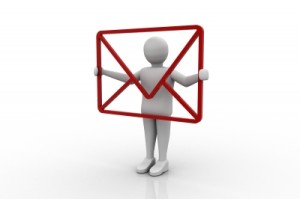 So many emails make it into our inbox every day. How organized is your inbox?
So many emails make it into our inbox every day. How organized is your inbox?
Are you the type of person who cleans out every message and has fewer than 10 emails left in your inbox at the end of the day? Or, are you the type of person who has over 1,000 messages at any given time?
Do you delete emails as they come in? Do you file them into folders (or Gmail labels)? Do you find yourself searching for emails, because you just can’t find the one you are looking for?
How often do you check your email? Do you respond right away to important message or just view them now (and respond later)?
Honestly, I go through different phases. At my corporate job, I answered every email as it came in. I had to have as few messages left in my inbox at the end of the day. When I would return from a vacation, I would have easily 400-600 unread emails in my inbox. The day I would return to the office, if I could whittle my messages down to less than 15 emails, I was happy. It was a successful day.
Nowadays I have 2 email accounts: a Gmail account for my personal email and my business account. As I have an iPhone, it’s easy for me to check both email accounts on the go. I do check email often, however I usually wait to reply to emails until I’m on my laptop so I can respond more clearly and process my thoughts better.
Email inboxes create many emotions and stress for people. How long is too long to respond to an email? Why won’t the other person respond to my question? Am I emailing too much? Was my inquiry clear?
Yesterday I attended my monthly NAPO (National Association of Professional Organizers) meeting. The session, led by Sharon Lowenheim of Organizing Goddess, Inc. (http://www.organizinggoddess.com), had us talking about email management.
Lessons and tips were learned and all in attendance shared techniques. The main take away was to treat email as if you would treat paper. Paper clutter is clutter in digital form. Here are a few tips to help navigate an organized inbox:
- Categorize “like items/emails” and put them into folders so you can easily find the correspondence.
- Label, label, label.
- Filter emails so that you are not overwhelmed by junk or spam; also filter newsletters you know you’ll read later.
- Change the subject line so that it refers to the new topic of discussion.
- Write emails with purpose and direction. If you are looking for the receiver to perform an action ask them. Make it clear.
- Use a programs like Unroll.me or getpocket.com or Gmail’s boomeranggmail.com or contactually.com to make email management easier
By taking the time everyday to handle incoming email as it arrives in your inbox, and by using these tips, you will find email management easier to deal with.
How do you handle your inbox and emails? Please share your story.
Image courtesy of renjith krishnan / FreeDigitalPhotos.net


